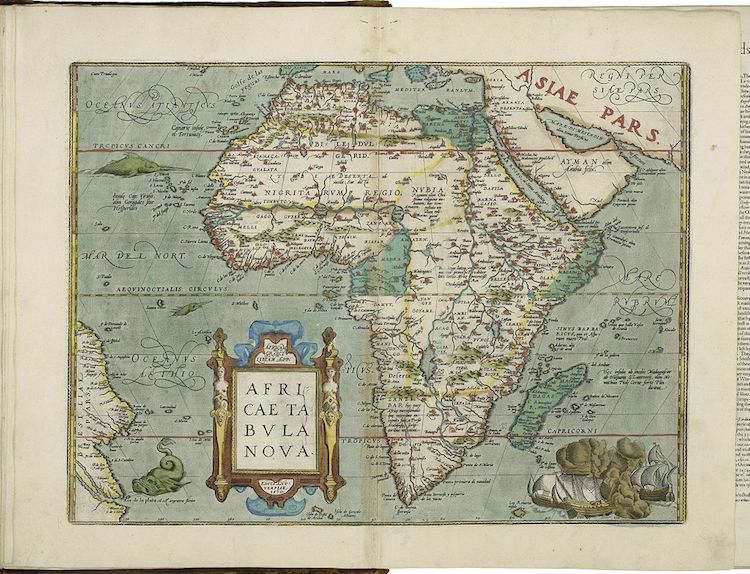
Abraham Ortelius, 1579, Wikimedia Commons It is fitting that his interests covered not only the revolutions in the scientific geography of which he was a primary innovator but also historical geography: his early works include detailed maps of ancient Egypt and the Roman Empire. Interestingly, Ortelius may also be the first person in history to have formally presented the basic theory of continental drift in his discussion of the ‘matching’ coastlines of Africa, Europe, and South America. Over his lifetime he worked as an engraver, geographer, cartographer and book trader but he is most well known as the creator of the first world atlas – the first edition of which was published in 1570. Abraham Ortelius (1527-1598)įrom Antwerp, Brussels, Ortelius was part of the world-renowned Dutch-Flemish school of cartographers. These were the first attempts at mapping the known world in its entirety which demonstrate a balance between striving for accurate cartography and presenting the wondrous elements of the distant world. ('served quietly, without accusation, wife, and offspring.In St John’s College Library’s Special Collections there are four copies of Ortelius’s world atlases. His tombstone at St Michael's Præmonstratensian Abbey in Antwerp bears the inscription, Quietis cultor sine lite, uxore, prole. Ortelius' own explorations of Biblical history in his maps, and the Christogram contained in his own motto, suggest him to be a religious man, but his abjuration of political religious authorities mark him as an individualist. Ortelius showed a glimpse of himself in a letter to a friend, regarding humanist Justus Lipsius: 'I do not know whether he is an adherent of the Pope or a Calvinist, but if he has ears to hear, he will neither be one nor the other, for sins are committed on both sides'. Although outwardly and officially recognized as Catholic (Arias Montanus vouched for Ortelius' Catholic orthodoxy prior to his appointment as Royal Geographer), Ortelius was able to separate himself from the religious furor which characterized the war in the low countries. In a sense his greatest achievement was his successful navigation of the religious and political violence endemic to his city throughout his adult life: The Dutch Revolt, or Eighty Years' War (1568 - 1648), fully embroiled Antwerp. His theories of geography were particularly ahead of his time with respect to the notion of continental drift, the possibility of which he mused on as early as 1596, and which would be proven correct centuries later. Moreover, many of his maps were based on his own scholarship, particularly his historical works. His contacts throughout Europe and extending even (via the Portuguese) to the Far East were formidable. He traveled extensively, but his genius was as a compiler, locating the best informed maps on which to base his own. Many of Ortelius' maps remained the standard for nearly a century. Appearing with but 53 maps in its first edition, Ortelius' work expanded with new maps added regularly. A handful of other maps preceded the 1570 publication of the first edition of the Theatrum Orbis Terrarum, which would prove to be his life work. His first published geographic work appeared in 1564, an eight-sheet cordiform world map. He accompanied Mercator on journeys throughout France in 1560 and it was at this time, under Mercator's influence, that he appears to have chosen his career as a scientific geographer.

He began trading in books, prints, and maps, traveling regularly to the Frankfurt book and print fair, where in 1554 he met Mercator. In 1547 he entered the Antwerp Guild of Saint Luke as an illuminator of maps. His connections with Spain - culminating in his 1575 appointment as Royal Cartographer to King Phillip II of Spain - gave him unmatched access to Spanish geographical knowledge during a crucial period of the Age of Discovery.
.jpg)
Along with Gerard Mercator and Gemma Frisius, he was a founder of the Netherlandish school of cartography.

He was the creator of the first modern atlas, Theatrum Orbis Terrarum and is a seminal figure in the history of cartography. Minnesota - North Dakota - South DakotaĪbraham Ortelius (ApJune 28, 1598) also known as Ortels, was a cartographer, geographer, and cosmographer of Brabant, active in Antwerp.Massachusetts - Connecticut - Rhode Island.


 0 kommentar(er)
0 kommentar(er)
